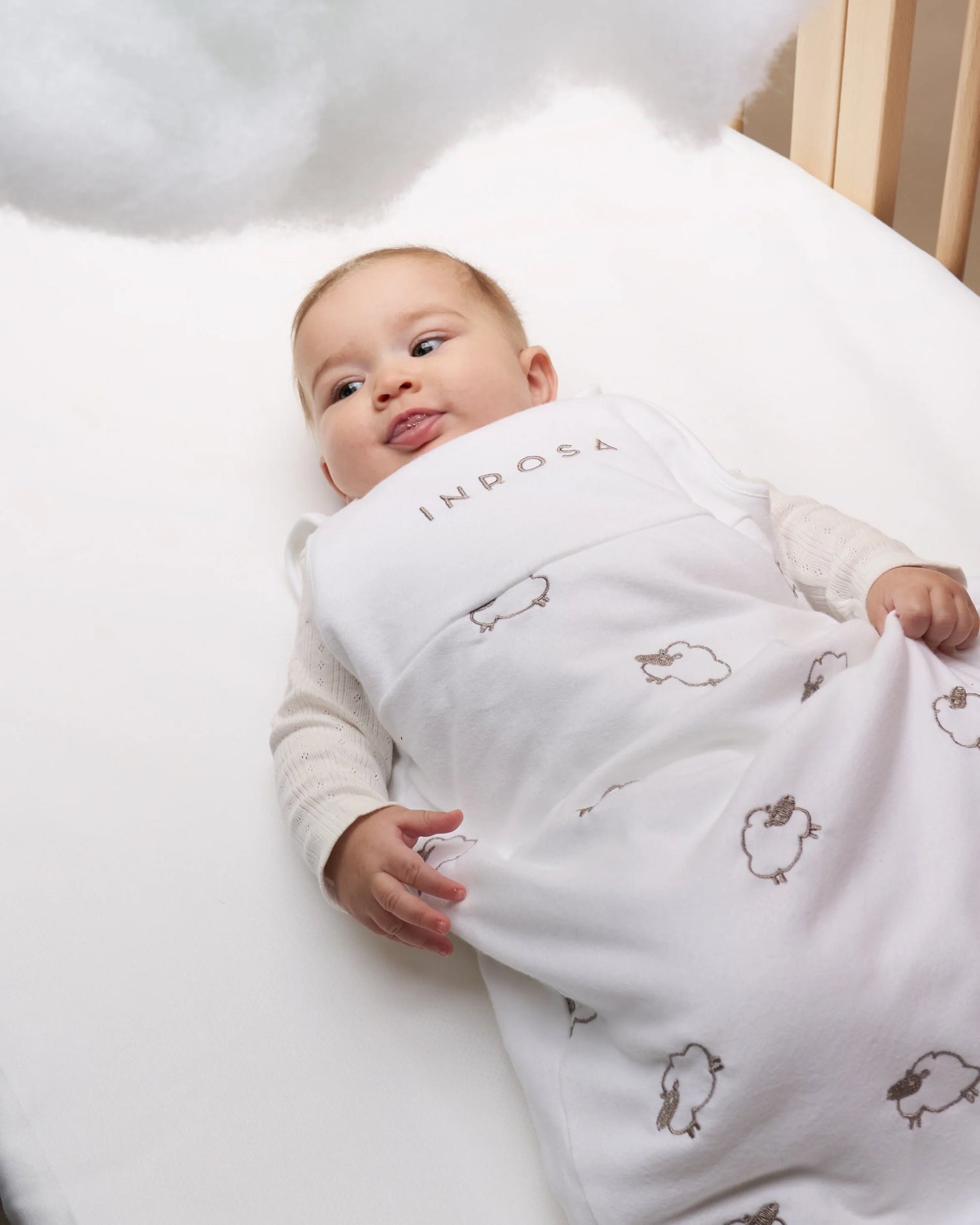The sleeping bag is a wearable blanket in the shape of a bag, closed at the bottom and sides, used in place of traditional sheets and blankets. In this article I will explain why it is useful to use it, when it is best to use it, how to choose it and what characteristics it must have to guarantee safety and comfort for your child (composition, safety, comfort, TOG, breathability).
Why is a sleeping bag useful?
A sleeping bag is a great alternative to traditional blankets and sheets. According to the American Academy of Pediatrics Guidelines , to reduce the risk of sleep-related accidents, it is advisable to avoid the use of weighted blankets, pads, swaddles, or other objects that could interfere with the baby's breathing.
Using a sleeping bag helps prevent your baby from slipping under the covers, reducing nighttime awakenings due to temperature changes. This solution maintains a constant body temperature and promotes a more peaceful sleep.
When to use a sleeping bag?
The sleeping bag can be used from birth. In particular, in the first months of life it offers warmth and containment, reminding the child of the intrauterine sensation and promoting a more peaceful sleep. It can be used up to 36 months.
The sleeping bag is ideal for use at home, when the baby sleeps in the crib, helping him maintain a comfortable temperature during the night.
How to choose the right sleeping bag?
To choose the ideal sleeping bag, consider the following factors:
Model
Choose a model that is closed at the bottom and sides, with straps and buttons to leave your child's arms free. Some winter models have removable long sleeves, allowing you to adapt it according to the season.
Season and Temperature (TOG)
TOG, or Thermal Overall Grade , is a unit of measurement of the thermal resistance of the fabric and helps you choose the sleeping bag based on the season and the temperature of the room. Check that the sleeping bag reports the TOG on the label.
Here is a guide on TOG levels:
- Lightweight (0.5 TOG): Suitable for summer and temperatures above 24°C.
- Summer (1.0 TOG): Perfect for temperatures between 21-23°C.
- Standard (2.5 TOG): Suitable for autumn, winter and spring with temperatures between 18-20°C.
- Winter (3.5 TOG): Ideal for very cold temperatures, but often excessive for heated homes.
It is important not to overheat the baby. If the room temperature is above 27°C, it is best to avoid using the sleeping bag altogether.
Cut
Make sure you choose the right size. A sleeping bag that is too big can be dangerous, allowing your baby to slide into it and cover their head. Conversely, a sleeping bag that is too small can restrict movement, causing discomfort.
Choose models that can be shortened thanks to the presence of buttons positioned on the bottom of the sleeping bag.
What features should a sleeping bag have?
The sleeping bag must be comfortable, breathable, safe and free of harmful substances. Check that the back does not have annoying seams or zippers. Check that buttons and zippers are easy to open, and that the materials are safe for the baby's skin.
Also, make sure that the sleeping bag promotes breathability, preventing the accumulation of humidity.




